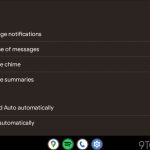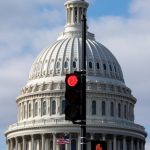This is a partial figure calculated only on the basis of the deaths confirmed so far, while investigations are continuing to establish a definitive count. The unrest in recent weeks has also spread to the outskirts of the capital. Yesterday, Christians gathered to pray for the victims.
Dhaka () – Seventy-five percent of those killed in clashes between police and protesters in Bangladesh were children or teenagers. The figure comes from information provided by hospitals and relatives of the victims: a total of 210 people died, including 113 minors and young people, although detailed information is available on the age, occupation and cause of death of only 150 people, most of whom died after receiving gunshot wounds.
Bangladesh’s Home Minister Asaduzzaman Khan confirmed the death toll at 147, but several national and international campaigns say the final figure could be much higher, up to more than 500. The count was made difficult for several reasons, including the fact that some bodies were taken from hospitals by relatives before autopsies.
Local newspapers told the stories of some of the minors involved in the riots, which broke out due to the reinstatement of quotas in public employment for the descendants of those who fought in the liberation war, but soon became anti-government protests.
Ifat, 16, was killed in Jatrabari, an area of Dhaka, on July 20. He was helping an injured man on the street when he was shot. His mother, Kamrun Nahar, said: “My son did not commit any crime. He was just trying to help.”
Even a four-year-old boy, Abdul Ahad, was killed by a bullet on the same day. Locked up with his parents in a flat in the Rayerbagh area, he was shot in the eye after going out onto the balcony, attracted by the noises outside. “It all happened in the blink of an eye. I lost my beloved son. What more can I say about it?” the father told local media.
Riya Gop, a six-year-old girl from Narayanganj, was also playing on the roof of her house when she was hit in the head by a bullet. After being rushed to Dhaka Medical College, she died five days later on July 25.
The clashes on July 20 also reached Savar, one of the capital’s suburbs, in the afternoon. Saad Mahmud, 14, was shot in the left leg after pushing himself near the area of the riots.
In connection with the recent violence, around 200 cases have been filed at various police stations in Dhaka. There are more than 213,000 charges, most of them against unknown persons. According to court documents, the police have arrested more than 2,500 people, including political activists and students, in the past 12 days.
Mumtaz Nahar, the mother of Nahid Islam, one of the coordinators of the quota reform movement, called for her son’s release: “The children are safe with their parents. How secure is the DB office? Give my son back to me.” Nahid and three other protest leaders were arrested by the police and taken to the Dhaka Metropolitan Police (DB) office. The mother, she continued, fears that Nahid will be tortured again in detention.
Meanwhile, six coordinators of the student movement, also arrested in Dhaka, announced the end of the demonstrations last night in a video sent to the media. An announcement that, as many university students pointed out on social networks, was probably made under duress after threats from the police.
Bangladeshi Christians held a memorial service for the victims yesterday. Nirmol Rozario, secretary of the Christian Religious Welfare Trust and president of the Bangladesh Christian Association, called for prayer in a press statement, in which he also expressed his condolences to the families of the students and prayed for the injured, condemned the violence and called for a thorough investigation into each death.








![[Img #74675]](https://thelatestnews.world/wp-content/uploads/2024/12/They-discover-a-new-class-of-X-ray-sources-in-the-150x150.jpg)



Add Comment